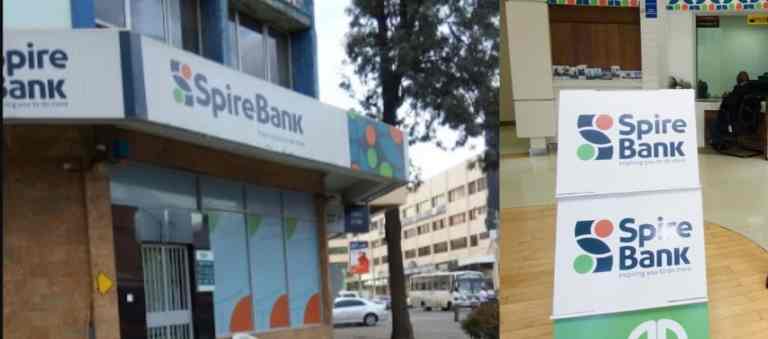Absa Bank Kenya has partnered with Huawei to establish a software-defined wide area network (SD-WAN) to connect the bank’s branches.
The SD-WAN, as a next-generation technology and service, is based on cost-effectiveness, agility, flexibility, scalability, security, and compliance.
As business continues to expand, Absa Bank Kenya is actively seeking the most appropriate network infrastructure.
“We strive to offer our customers a seamless digital experience. We want to enable them to bank and transact without any hitch and in a seamless manner at the convenience of whatever they could be,” said Moses Okundi, CIO of Absa Bank Kenya.
To realize that, the bank needed to build a new infrastructure to improve the efficiency of various banking services, reduce O&M costs, and enhance user experience at branches.
To meet the digital transformation requirements, Huawei and Absa Bank Kenya’s technical team conducted in-depth discussions and surveys.
Based on the bank’s actual requirements and digital strategy, as well as Huawei’s strong technical reserves and construction experience in enterprise network and financial digital transformation, Huawei provided Absa Bank Kenya with a customized NCE-Campus-based SD-WAN solution. In addition to common SD-WAN capabilities, this solution comes with some other unique advantages including:
- High-performance and congestion-free forwarding:
- 3x high-performance in the industry, meeting SD-WAN development requirements in the next five years;
- Intelligent application routing ensures user experience for key applications:
- Application-level intelligent traffic steering + 5G plus Fiber on-demand scheduling + A-FEC enable 20% video packet loss without frame freezing and artifacts.
3) Full-process automation:
- Supporting multiple ZTP modes including emails, USB flash drive, etc. Network deployment at branches can be performed within minutes.
- Branch, device, application and link status are all visualized.
- Capable of centralized management and simplified O&M.
“I see it as Lego blocks where the bottom layer is a strong technology foundation that gives us a platform to offer cutting-edge digital solutions to our customers. A strong, resilient network connects all the elements of the platform reliably.” – Moses Okundi, CIO of Absa Kenya.
Facing the ever-changing customer needs over the past few years, Absa Bank regards “digital enablement” as one of the company’s key strategies. While accelerating enterprise innovation, Absa works closely with partners to accelerate digital transformation, provide convenient and high-quality innovative services for employees and customers, and further enable the creation of a digital Africa.
In the future, branch offices will act as face-to-face (F2F) channels and customer experience centres where customers handle complex transactions, solve problems and receive financial advisory services. Smart bank branch networks will be the key for banks to achieve this goal and support commercial banks’ digital strategies.
What does an SD-WAN-based branch cloud network bring to Absa Kenya?
“We got to a point where we can manage traffic and distribute traffic evenly across various technology options or various connectivity options from various connectivity providers. The value of this is that it gives us robust resilience in managing that connectivity,” adds Okundi.
Indeed, in the future, the branch network of Absa Bank Kenya will have intelligent traffic steering capability. It means the network can dynamically select MPLS links or internet links based on application quality and MPLS link quality, to ensure that key services use links with good quality.
In addition, based on Huawei’s exclusive algorithm support, even if the quality of internet links is not so good, communication quality can still be ensured, which means that MPLS has a cost-effective alternative.
In addition, Huawei provides the iMaster NCE-Campus O&M platform for Absa Kenya, which can display the key O&M quality of devices, applications, and traffic. This platform can visualize application traffic of all branches, and therefore allows the IT team to monitor the dynamic data and adjust the bandwidth of each branch in a timely manner.
This brings efficient and intelligent operations, as Okundi explains, ” For my tech team, we now have a very good level of visibility regarding the usage of the connectivity partners we have engaged. We are able to see where the user is and how the traffic is distributed. And in the worst-case scenario where manual intervention is required, our team can pinpoint the challenges, making their intervention very accurate and efficient.”
These are just the tip of the iceberg in terms of the benefits provided by SD-WAN. Absa Bank Kenya’s intelligent cloud-based branch network will serve as a critical foundation for the financial giant’s digital transformation.
As Okundi expounds: “I see it as a Lego block where the bottom layer is a strong technology foundation that gives us a platform to really offer cutting-edge digital solutions to our customers. And right at the bottom layer is strong connectivity.”
In the future, this powerful branch network will further promote the intelligent upgrade of Absa Bank and eventually help them evolve into an intelligent customer experience centre. This digital foundation will continue to support the business expansion and innovation of Absa Bank Kenya to provide the most advanced and the best financial services to Kenya’s customers and enterprises.





